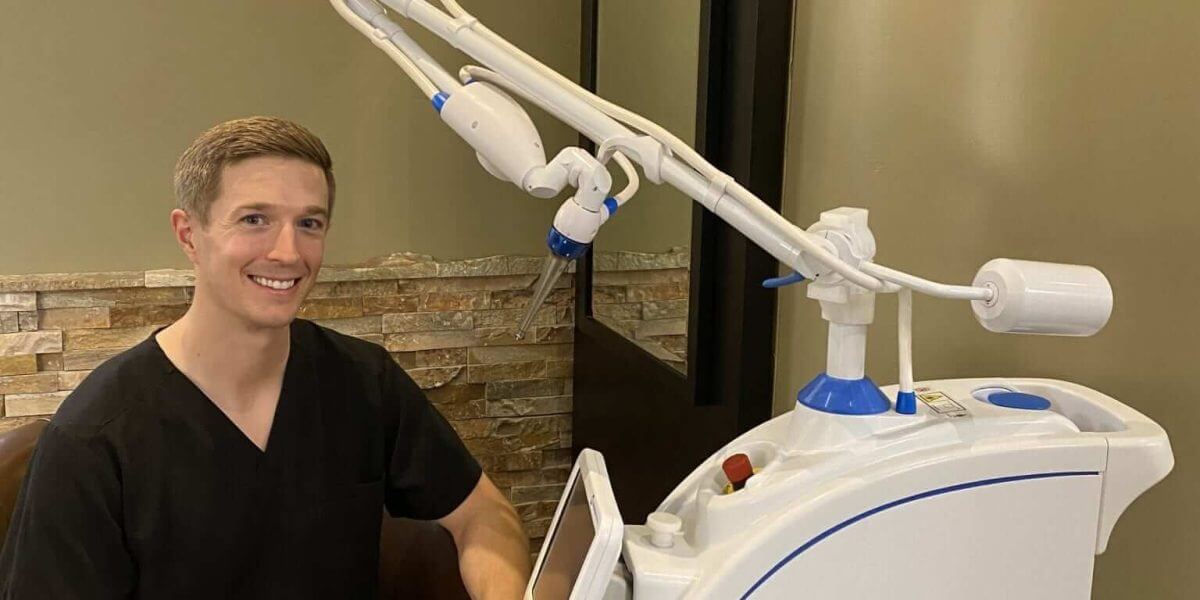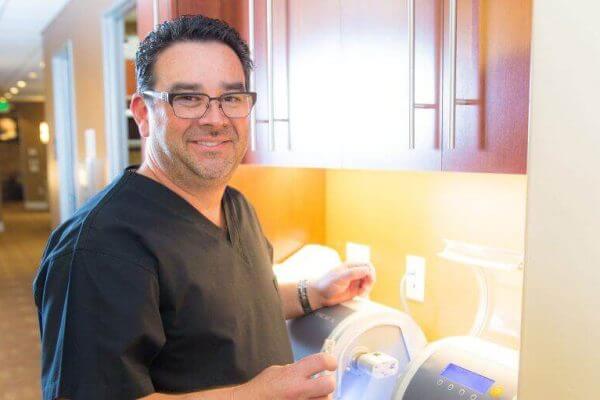Bridging the Gap with Tooth Gap Treatment
At Lakefront Family Dentistry, we believe that every smile tells a story. But sometimes, a little gap can make some people feel self-conscious. Diastema, the dental term for spaces between the teeth, can be a source of insecurity for some people. These spaces, mostly found between the two upper front teeth, can vary in size and are often noticeable when you speak or smile.
The presence of diastema can affect more than the aesthetics of your smile—it can influence your oral hygiene, speech, and even the way you carry your daily interactions. Addressing these spaces is not merely cosmetic; it’s a step towards enhancing your dental health and overall confidence.
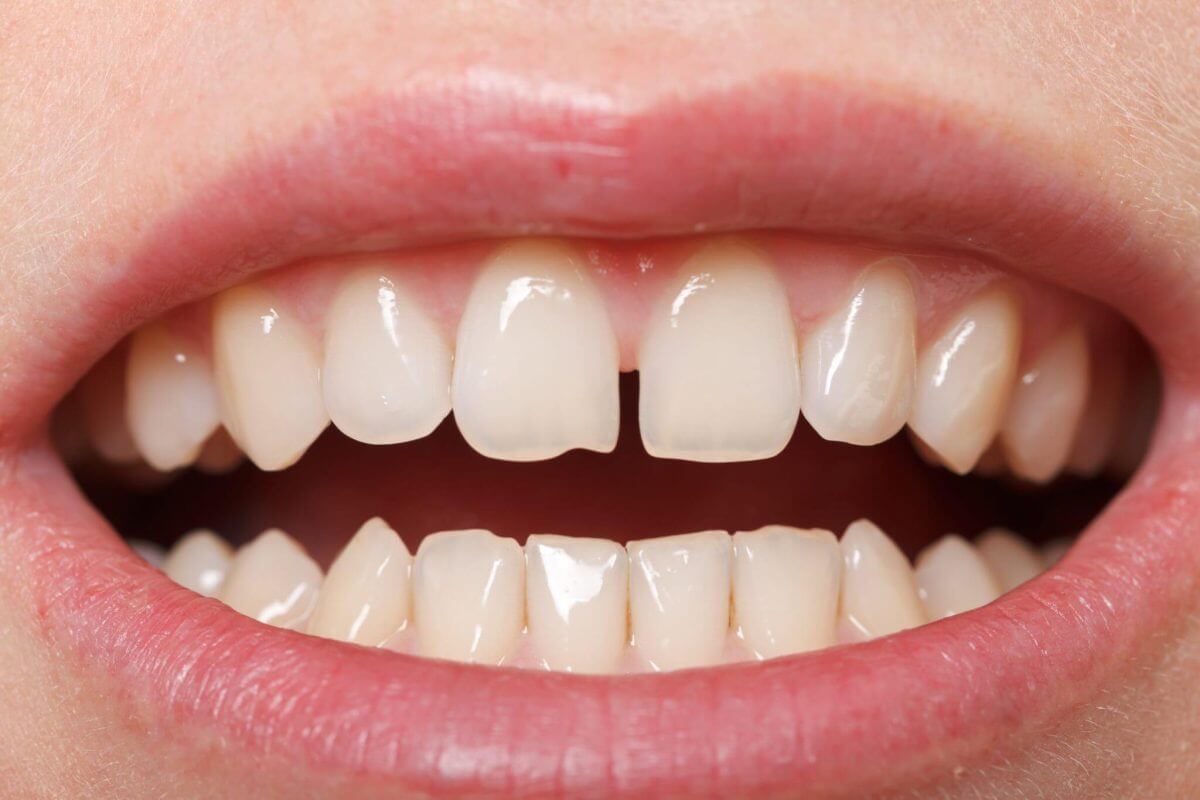
Unveiling the Underlying Causes
Why do these dental gaps grace some smiles and not others? The mystery isn’t as deep as the spaces themselves. Several factors could be at play:
Growth Patterns: The Dynamics of a Developing Smile
– Growth Patterns: As children lose their baby teeth and adult teeth come in, some find that their new teeth do not fill the space completely.
The journey from a child’s gummy smile to a full set of adult teeth is a remarkable transformation that occurs over several years. This period of dental development is characterized by the natural loss of primary (baby) teeth and the eruption of permanent (adult) teeth. It’s a complex balance of biological timing and spatial accommodation that can sometimes lead to unexpected results, such as diastema.
A Space Emerges
As children mature, their baby teeth begin to loosen and fall out, a process typically set in motion by the underlying permanent teeth pushing upwards and absorbing the roots of the baby teeth. This natural progression ensures that the primary teeth make way for their adult successors. However, the timing and sequence of this tooth transition can vary greatly from one child to another.
The Role of Baby Teeth in Spacing
Baby teeth act as natural spacers, holding the fort until the adult teeth are ready to take their place. These primary teeth reserve space in the jaw and help guide the permanent teeth into their correct positions. But sometimes, this doesn’t go entirely as nature intended. If a baby tooth is lost too early, due to decay or accident, the adjacent teeth can shift into the space left behind. This movement can diminish the room available for the adult tooth, leading to crowding or misalignment.
Conversely, if there’s a delay in the loss of baby teeth, or if the adult teeth are smaller in size compared to the baby teeth they’re replacing, extra space can be left between the teeth, resulting in gaps.
Adult Teeth and Their Influence on Diastema
When the permanent teeth begin to erupt, they bring with them their genetically predetermined size and shape. If the teeth are proportionally small relative to the jaw size, or if they erupt at an angle that doesn’t utilize the full arch space, gaps can form. In other instances, if there’s a discrepancy between the size of the upper and lower jaws—where one is larger than the other—this can also result in spacing issues, including diastema.

Monitoring Growth: A Preventative Approach
At Lakefront Family Dentistry, we encourage early dental visits to monitor the growth patterns of young patients. By keeping a watchful eye on the development of a child’s dentition, we can often predict and prevent the occurrence of diastema and other orthodontic issues. Regular check-ups allow us to observe the rate at which baby teeth are lost and adult teeth emerge, and we can take proactive steps if it seems that spacing issues may arise.
Interventions for Spacing
In cases where premature loss of baby teeth occurs or where growth patterns suggest the likelihood of diastema, we might recommend space maintainers. These are custom-made dental appliances that reserve the space for permanent teeth to come in correctly, helping to prevent shifting and the subsequent development of gaps.
By understanding and intervening in these growth patterns, when necessary, we can often minimize or eliminate the need for more extensive orthodontic work later. Our goal is to guide each child’s dental development so they can grow into a smile that’s both healthy and aesthetically pleasing.
This delicate interplay of timing, space, and growth is at the heart of our preventative dental philosophy for children at Lakefront Family Dentistry, ensuring that when adult teeth make their grand entrance, they do so with grace, aligning beautifully to create a seamless, gap-free smile.
Genetic Influence: The Hereditary Blueprint of Your Smile
– Genetics: If your parents flashed a gapped grin, chances are you might, too. Diastema can run in families.
Diastema is more than just a dental issue; it is often a family trait, woven into the very fabric of your genetic makeup. Like the color of your eyes or the shape of your nose, the characteristics of your smile are influenced by the genes passed down from your ancestors. When it comes to diastema, genetics play a pivotal role in determining the spacing of your teeth.
The Genetic Pattern of Diastema
If a gap between the teeth is a common feature within your family, it’s likely that you may have inherited this trait. Genes dictate a variety of dental attributes, including the size of individual teeth, the width of the dental arch, and even the potential for certain oral health issues that can influence tooth positioning.
The Genetic Mosaic of Tooth Development
Tooth development is a complex process influenced by numerous genes. These genes orchestrate everything from the initiation of tooth bud formation to the final positioning of teeth within the mouth. When it comes to diastema, certain genetic markers may lead to the development of larger than average spaces between teeth or direct the growth of teeth in a way that leaves extra room in the dental arch.
Family Traits and Diastema
In many instances, if you have a gap between your teeth, looking at family photos might reveal a shared smile characteristic. This is not a coincidence but rather a testament to the strength of genetic inheritance. Diastema can often be observed across generations, suggesting that if one or both parents have a gap, their children have a higher likelihood of exhibiting the same trait.

Genetics and Orthodontic Treatment
Understanding the genetic propensity for diastema is crucial when planning for orthodontic treatment. At Lakefront Family Dentistry, Dr. Phillipe and Dr. Hauser consider your family history to predict the likelihood of a teeth gap persisting or appearing in future generations.
This knowledge allows for a more tailored approach to treatment, recognizing that genetics can influence not only the need for an intervention but also the stability and longevity of the treatment outcomes.
Beyond Genetics: The Environmental Influence
While genetics set the stage for diastema, environmental factors and personal habits can also impact tooth spacing. For example, consistent thumb sucking during early childhood or prolonged use of a pacifier can exacerbate a genetically predisposed gap. Hence, our dental assessments are comprehensive, considering both your hereditary background and lifestyle factors.
A Tailored Approach to Hereditary Diastema
When diastema is part of your genetic makeup, our approach at Lakefront Family Dentistry is not to simply close the gap but to create a harmonious and balanced smile that aligns with your natural anatomy. We respect the uniqueness of your genetic blueprint while offering contemporary solutions to enhance your smile in a way that is true to you.
In families where diastema is prevalent, proactive monitoring and early dental guidance can be key. By recognizing the trait early on, especially in children, we can provide timely advice and interventions to address the spacing before it becomes a more significant concern.
Genetic influence in diastema is a fascinating reminder of our connection to our lineage and how traits can be shared through smiles across generations. At Lakefront Family Dentistry, we blend the understanding of your genetic heritage with leading dental technology and care to craft a smile that is uniquely yours—a smile that brings together the legacy of your past and the promise of your future.
Oral Habits: The Impact of Prolonged Practices on Tooth Alignment
– Oral Habits: The long-term presence of habits like thumb sucking can exert pressure on the teeth, causing them to move apart.
Oral habits, particularly in childhood, can have a profound and lasting impact on dental alignment and the overall health of your mouth. Among these, thumb sucking is one of the most common habits that can contribute to the formation of diastema.
The Mechanics Behind Thumb Sucking and Tooth Movement
Thumb sucking is a natural reflex for infants and young children, providing comfort and security. However, when this habit persists beyond the early years of tooth development—especially past the eruption of permanent teeth—it can lead to significant dental changes.
The repeated motion and pressure of the thumb against the teeth and the supporting jawbone can alter the growth pattern of the mouth. Here’s how:

– Pressure on Front Teeth: As the thumb rests between the upper and lower teeth, it exerts forward pressure on the upper incisors and backward pressure on the lower incisors. This consistent force can cause the front teeth to tilt outward, creating a gap.
– Altered Jaw Development: Prolonged thumb sucking can also influence the natural arch form of the jaw, leading to a more constricted dental arch. This can exacerbate the spacing issue by preventing teeth from aligning closely side by side.
– Impact on the Palate: The sucking action can also result in a high, narrow palate, further contributing to misaligned teeth and an increased likelihood of diastema.
Tongue Thrusting and Diastema
Another oral habit that can contribute to diastema is tongue thrusting. This is when the tongue presses too forwardly in the mouth during swallowing, speaking, or at rest. Like thumb sucking, the constant pressure exerted by the tongue can push the teeth apart, leading to or worsening a pre-existing gap.
Intervening in Oral Habits
Recognizing and addressing these habits early on is critical. Lakefront Family Dentistry takes a compassionate and proactive approach to help patients of all ages overcome habits that can contribute to diastema:
– Early Identification: Regular dental check-ups allow our team to spot signs of thumb sucking or tongue thrusting and their effects on tooth alignment early.
– Education and Support: We provide educational resources to parents and engaging guidance to children on the importance of breaking these habits.
– Interventional Appliances: In some cases, we may recommend orthodontic or dental appliances that help discourage the habit and guide the teeth into a more favorable position.
A Multifaceted Approach to Treatment
At Lakefront Family Dentistry, Dr. Phillipe and Dr. Hauser understand that habits are hard to break, especially when they’ve been present since infancy. That’s why our approach is not only focused on dental correction but also includes behavioral techniques and supportive measures that address the root cause of the habit.
Our dental team is here to support you or your child through this process, offering gentle encouragement and professional advice every step of the way.
Embracing Change for a Healthier Smile
Overcoming oral habits is a journey—one that requires patience, support, and sometimes, professional intervention. Whether it’s the use of a custom-fitted oral appliance or providing strategies to reduce the frequency of thumb sucking, we are dedicated to helping our patients adopt healthier oral behaviors. By tackling these habits, we not only work towards closing gaps caused by diastema but also towards fostering a healthier oral environment that will benefit our patients for a lifetime.
Labial Frenum: Navigating the Role of This Tissue in Diastema
– Labial Frenum: This piece of tissue above the two front teeth can sometimes be oversized, leading to a gap.
The labial frenum is a small fold of mucous membrane that extends from the inside of your upper lip to the gum just above your two front teeth. It is an often-overlooked part of oral anatomy that can have a substantial impact on the spacing of your teeth.

Understanding the Labial Frenum
Typically, the labial frenum plays a minimal role in day-to-day oral function. However, when this band of tissue is larger or tighter than usual, it can exert undue influence on the teeth it connects to. An oversized labial frenum may:
– Prevent Teeth from Coming Together: In some individuals, the frenum attaches lower on the gum line, encroaching upon the space between the front teeth. This can prevent the teeth from growing in close proximity, leading to a gap.
– Create Tension on the Gum Tissue: A prominent frenum can pull on the gum tissue attached to the central incisors, which may contribute to or exacerbate a diastema over time, especially if there is concurrent gum recession.
– Interfere with Orthodontic Treatment: Even if braces or aligners align the teeth perfectly, an oversized frenum can pose a risk of relapse, causing a gap to reappear after orthodontic appliances are removed.
Diagnosing Frenum-Related Diastema
At Lakefront Family Dentistry, Dr. Phillipe and Dr. Hauser employ a detailed examination process to diagnose frenum-related diastema. This involves a visual inspection, palpation of the tissue, and in some cases, digital imaging to determine the extent of the frenum’s impact on tooth spacing.
Frenectomy: A Simple Solution
When the labial frenum is identified as a contributing factor to diastema, a frenectomy may be recommended. This simple surgical procedure involves the removal or reshaping of the frenum to alleviate its binding effect on the front teeth. Here’s how it works:
– Procedure Overview: A frenectomy is a quick and typically painless procedure that can often be completed in one office visit. Utilizing modern techniques, like our Solea laser in our private practice dental office, the frenum is carefully trimmed to reduce its size.
– Healing and Recovery: Post-procedure discomfort is usually minimal, with many patients reporting only mild soreness. Healing is generally rapid, and any discomfort can often be managed with over-the-counter pain relievers.
– Dental Follow-Up: In some cases, especially for younger patients or those already undergoing orthodontic treatment, a frenectomy may be followed by braces or Invisalign aligners to close the gap left by the oversized frenum.
A Collaborative Approach
For each patient, the decision to proceed with a frenectomy is made collaboratively. Lakefront Family Dentistry considers the patient’s age, the size and position of the gap, and the patient’s overall dental needs. Dr. Mark G. Phillipe, DDS, and Dr. Derek B. Hauser, DDS, ensure that patients and their families are well-informed about the procedure, its benefits, and its role in a comprehensive treatment plan to correct diastema.
Long-Term Outlook
Post-frenectomy, patients at Lakefront Family Dentistry are provided with detailed aftercare instructions to ensure optimal healing. Follow-up visits are scheduled to monitor the site of the procedure and to assess the movement of the teeth post-intervention. This continuous care is part of the practice’s dedication to achieving lasting results and complete patient satisfaction.
Gum Health: The Foundation of a Stable Smile
– Gum Health: Gum disease can weaken the support for teeth, causing them to drift and create spaces.
Gum health is a fundamental aspect of overall dental well-being, often underestimated in its importance. The gums provide crucial support for the teeth, securing them in place within the jaw. When gum health is compromised by disease, the stability of this support is undermined, potentially leading to tooth movement and the creation of spaces such as diastema.
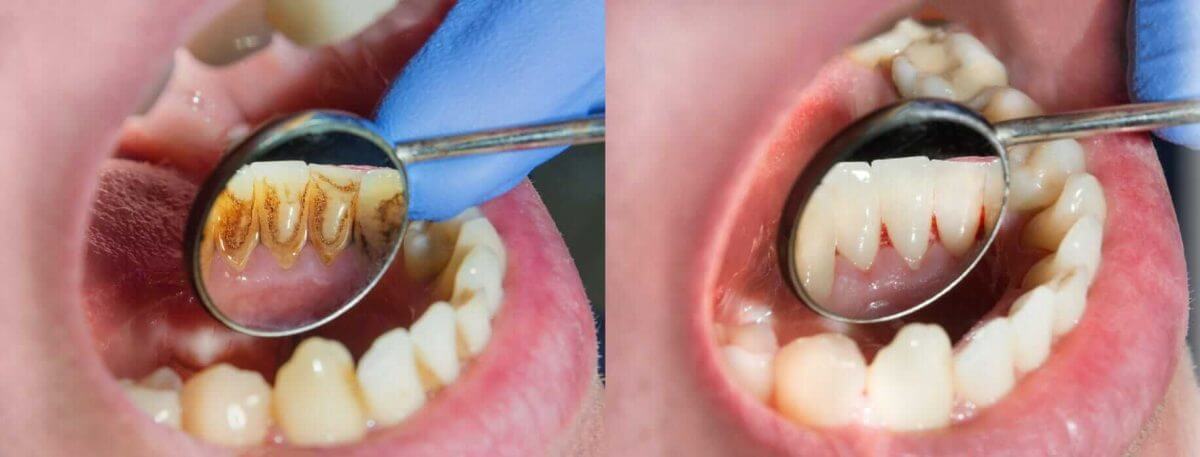
The Cascade Effect of Gum Disease on Tooth Positioning
Gum disease, sometimes referred to as periodontal disease, is an inflammatory condition that affects the tissues surrounding the teeth. Here’s how it can relate to diastema:
– Inflammation: The initial stage of gum disease, gingivitis, is characterized by red, swollen gums that may bleed easily. This inflammation can begin to affect the periodontal ligament, a structure that helps hold the teeth tight against the jawbone.
– Attachment Loss: As gum disease progresses to periodontitis, the fibers and bone that anchor teeth in place can be destroyed. This loss of attachment can cause teeth to become loose and shift, potentially leading to gaps.
– Tooth Drift: Once the integrity of the gum and bone support is compromised, teeth may start to drift apart, especially the front teeth, which can result in diastema.
Diagnosing Periodontal Contributions to Diastema
The team at Lakefront Family Dentistry takes a proactive approach in assessing gum health as part of the comprehensive evaluation for diastema. Using a combination of clinical examination and digital imaging, Dr. Derek Hauser and Dr. Mark Phillipe can identify the signs of gum disease that might be contributing to the development of spaces between the teeth.
Combating Gum Disease: The First Line of Defense
Addressing gum disease is paramount in preventing and treating diastema related to periodontal issues. Lakefront Family Dentistry’s strategy includes:
– Scaling and Root Planing: This deep-cleaning procedure removes plaque and tartar from below the gumline and smoothens the root surfaces, which helps the gums reattach to the teeth and can halt the progression of periodontal disease.
– Medication: In some cases, antimicrobial agents or antibiotics may be used to reduce bacterial infection and inflammation.
– Maintenance: Regular periodontal cleanings are crucial for patients who have experienced gum disease to prevent recurrence and to monitor for any further tooth movement.
Restoring Gum Health for Long-Term Stability
When gum disease is brought under control, the likelihood of teeth drifting apart decreases. In some instances, once the gums are healthy and inflammation is reduced, the teeth may naturally move closer together, reducing the gap.
However, if diastema persists after periodontal treatment, Lakefront Family Dentistry’s top dentists can explore additional options such as orthodontics to close the space.

Prevention: The Best Medicine for Gum Health and Diastema
Preventive care is the cornerstone of maintaining gum health and preventing diastema. Lakefront Family Dentistry emphasizes the importance of biannual dental check-ups, proper oral hygiene, and patient education on the signs and symptoms of gum disease. Patients are empowered to maintain optimal oral health practices that support the strength and stability of their teeth.
Your Personal Smile Assessment
Our dedicated team at Lakefront Family Dentistry, led by Dr. Mark Phillipe and Dr. Derek Hauser, begins your journey to a seamless smile with a comprehensive assessment. During your initial consultation, we don’t just look at the gaps — we consider your oral health to ensure that your customized treatment plan not only addresses aesthetics but also promotes overall dental well-being.
Navigating the Route to a Gap-Free Smile
With an array of treatment options available, our goal is to select the one that best fits your individual needs and lifestyle:
Orthodontic Aligners: The Invisalign Journey
For many patients with diastema, Invisalign presents an ideal solution. As a premier provider of these clear aligners, Lakefront Family Dentistry prides itself on crafting smiles without the visible burden of traditional braces. Invisalign aligners are discreet, removable, and custom made to gradually move your teeth into the desired position, closing gaps and enhancing your smile’s natural beauty.
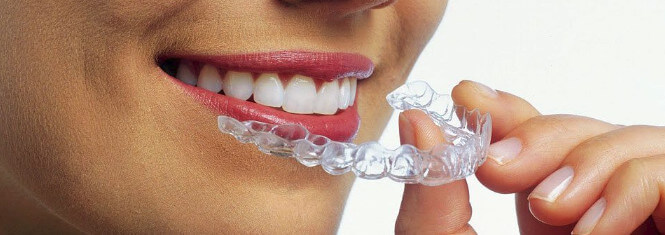
Complex Cases: Partnering with Orthodontic Excellence
When diastema presents a more intricate challenge, we entrust your smile to our esteemed orthodontic partner. With a 30-year history of collaboration, this orthodontic specialist’s expertise ensures that even the most complex cases are managed with precision and care, delivering results that exceed expectations.
Additional Aesthetic and Functional Treatments
– Dental Bonding: A quick and effective method where resin material is shaped and polished to match the surrounding teeth, effortlessly closing smaller gaps.
– Veneers: These beautiful CEREC porcelain veneers our dentists make in our office are artfully crafted to conceal spacing issues, offering a durable and aesthetic solution.
– Crowns: For teeth that require more extensive restoration, same-day CEREC crowns carefully made with digital imaging and our in-house milling machines provide a means to not only close gaps but also restore the integrity of each tooth involved.
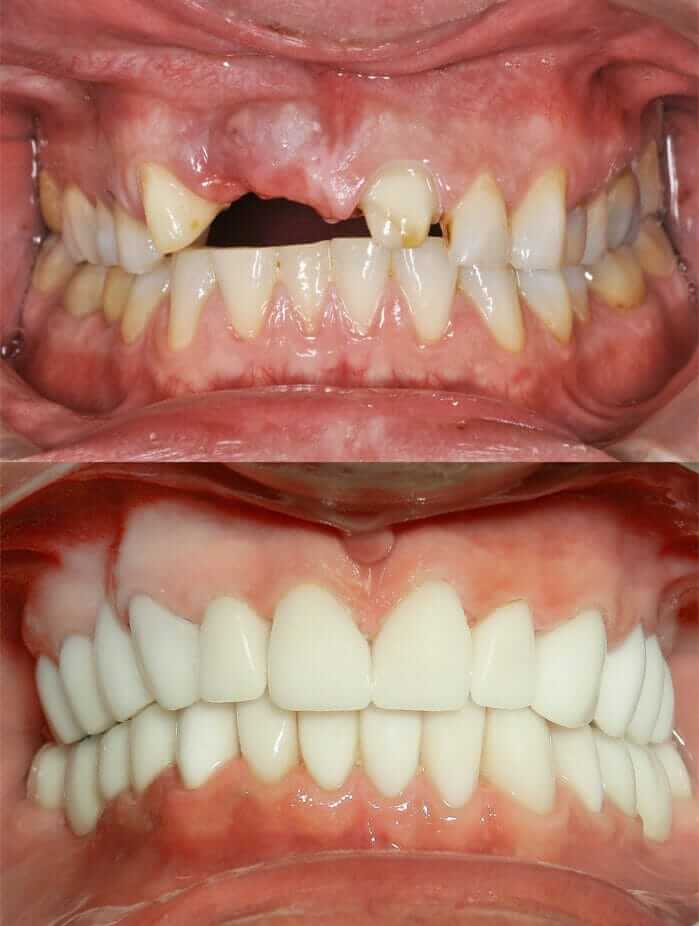
Understanding the Treatment Process
Embarking on a treatment journey to correct diastema is a commitment to your oral health and personal confidence. Here’s what to expect:
– Evaluation and Planning: During your consultation, we will evaluate your diastema, discuss your dental and medical history, and outline your treatment options.
– Customization: Whether you choose Invisalign or another treatment, each solution is tailored to fit your needs, ensuring comfort and effectiveness.
– Treatment Duration: Depending on the chosen method and the extent of your diastema, treatment can last from a few months to a couple of years.
– Post-Treatment: Once your diastema has been addressed, we may recommend retainers to keep your teeth in place, ensuring lasting results.
Why Trust Lakefront Family Dentistry with Your Diastema Treatment
Our practitioners, Dr. Mark Phillipe and Dr. Derek Hauser, combine their vast experience with a passion for personalized care. With state-of-the-art dental technology at our fingertips and a commitment to ongoing education, we ensure that our methods are as advanced as they are effective.
Continued Care for Your Enhanced Smile
Our care for your smile extends far beyond the treatment for diastema. We provide education on maintaining your new smile, schedule regular check-ups, and offer professional teeth cleaning to ensure your oral health remains pristine.
Common Questions: Clearing Up Diastema Doubts
Frequently Asked Questions About Diastema and Tooth Gap Treatments
Q1: What is diastema, and why do I have a gap between my teeth?
A1: Diastema refers to a gap or space between two teeth, commonly seen between the upper front teeth. This condition can be due to several factors such as genetics, the size of the teeth, growth patterns, the presence of a large labial frenum, or habits like thumb sucking.
Q2: Is having a gap between my teeth something that needs to be treated?
A2: Treatment is not always necessary unless the gap is a concern for you aesthetically, or if it’s causing dental health issues. Some people choose to embrace their diastema as a unique feature of their smile.
Q3: What are the treatment options available for closing a tooth gap?
A3: There are multiple treatments for diastema, depending on its cause and size, including orthodontics like braces or Invisalign, dental bonding, veneers, or crowns. In some cases, a frenectomy may be required if an oversized labial frenum is the cause.
Q4: How long does it typically take to close a gap with Invisalign?
A4: The duration of Invisalign treatment varies based on the individual case, but it generally ranges from 6 to 18 months. A specific timeframe can be provided after a consultation and evaluation.
Q5: Can children have treatment for diastema, or should they wait until they’re adults?
A5: Treatment timing for diastema in children depends on the cause. If it’s due to natural development or baby teeth falling out, it’s often best to wait until the permanent teeth have fully erupted. However, certain conditions like an oversized labial frenum might be addressed early on.
Q6: Are there any risks associated with treatments for diastema?
A6: As with any dental procedure, there are potential risks, but they are minimal. Common risks include tooth sensitivity and, in rare cases, damage to the tooth enamel. Your dentist will discuss all potential risks and how they are mitigated before treatment.
Q7: Will my dental insurance cover the cost of diastema treatment?
A7: Coverage will depend on your specific dental insurance plan and the type of treatment you’re getting. Some plans may cover orthodontic treatments but not cosmetic procedures. It’s best to check with your insurance provider.
Q8: Is there a chance my tooth gap can reappear after treatment?
A8: There is a slight possibility of relapse, particularly if retainers are not worn as advised after orthodontic treatment. Consistent follow-up care is crucial to maintaining results.
Q9: How do I maintain my results after the gap is closed?
A9: Maintaining good oral hygiene, wearing your retainer as instructed, and regular dental check-ups are essential for preserving the results of diastema treatment.
Q10: How can I get started with treatment for my tooth gap at Lakefront Family Dentistry?
A10: The first step is to schedule a consultation with Dr. Phillipe or Dr. Hauser at Lakefront Family Dentistry. They will conduct a thorough evaluation, discuss your treatment options, and create a personalized plan to achieve your smile goals.
Requesting an Appointment: Your First Step Toward a Gap-Free Smile
Ready to close the gap? It all starts with a consultation at Lakefront Family Dentistry. Reach out to us to request a dental appointment, and let’s begin the process of perfecting your smile.

Invitation to Confidence: Your Smile, Our Promise
Your smile is a powerful expression of who you are. At Lakefront Family Dentistry, we are committed to ensuring that expression is as vibrant and complete as it deserves to be. By addressing diastema, we’re not just enhancing your smile; we’re boosting your confidence and transforming how you engage with the world. Contact us today (951) 244-9495 to take the first step toward a gap-free, confident future.


